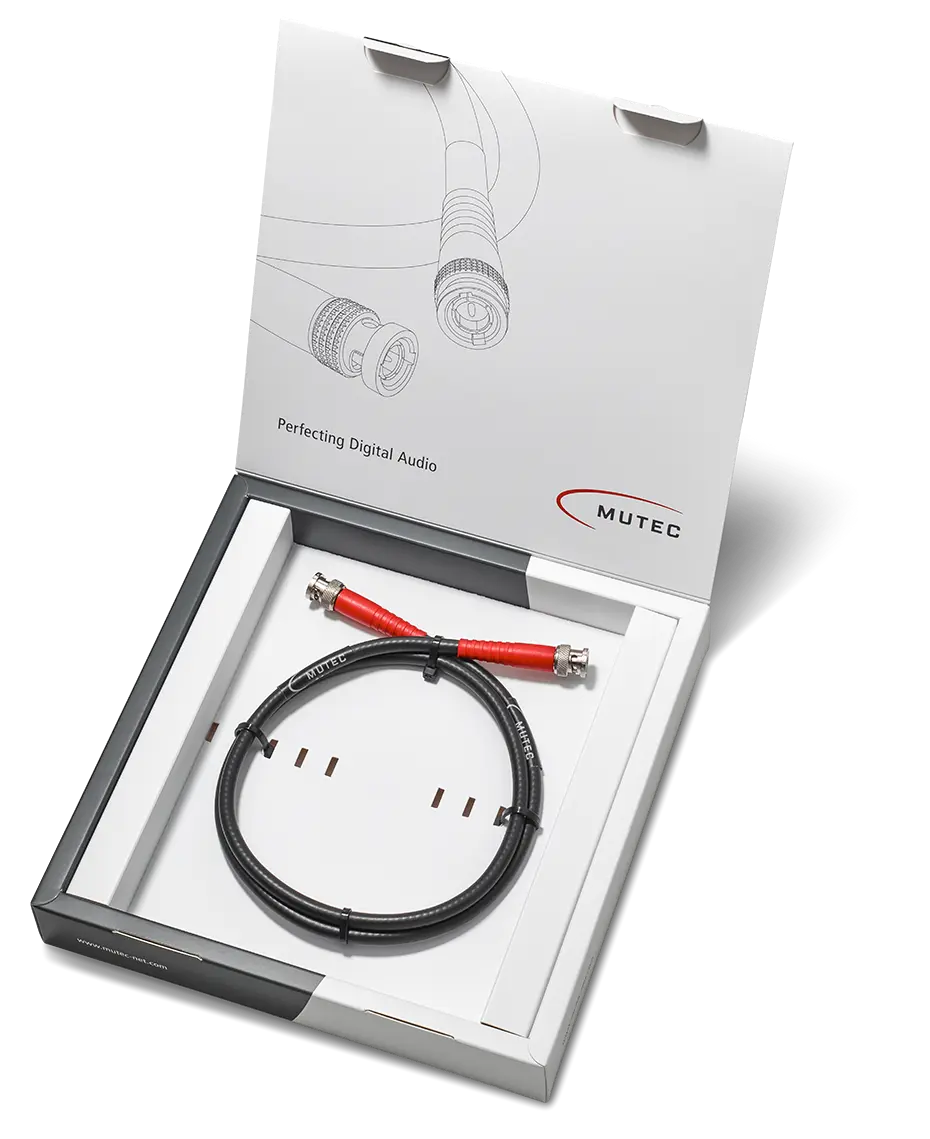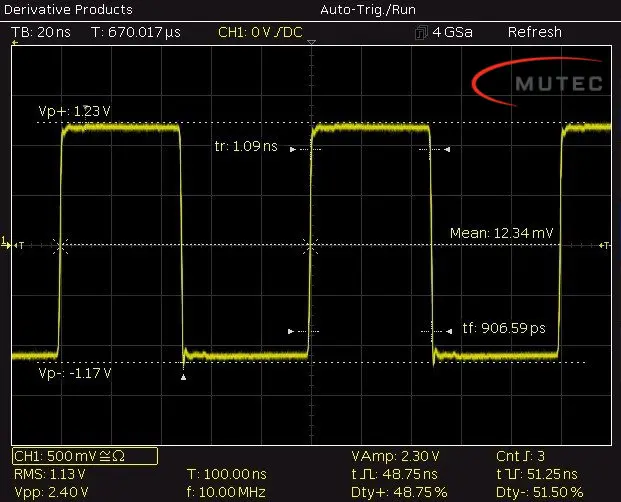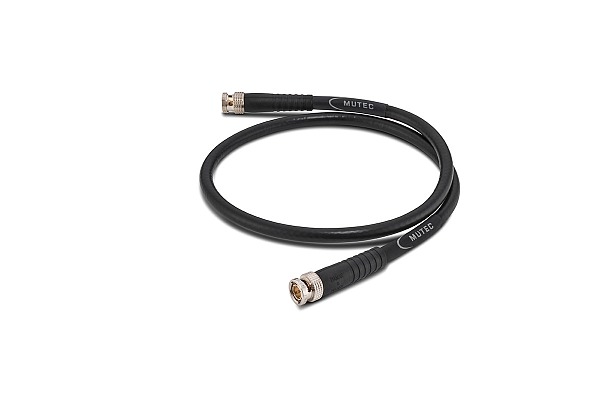MUTEC
PSC 50
The right 50 ohm digital cable
The right digital cable with a characteristic impedance of 50 ohms
The MUTEC PSC 50 BNC/BNC coaxial cable has a characteristic impedance of 50 Ohm. It is ideally suited for the transmission of 10 MHz clock signals between a MUTEC REF series reference clock generator and external devices with an impedance of 50 Ohm. Such an impedance is given for the following types of clock receiving devices D/A converters, streamers, network switches, CD players.
Features

- Coaxial construction
- Double shielding
- Lowest attenuation
- Low oxygen copper conductor
- Low loss gas-filled PE-LCC dielectric
- Guaranteed 50 Ohm characteristic impedance
- Complete, accurate, fast, jitter-minimised data transmission
- Two lengths: 0.75 and 1.0 metres
- Highly flexible material for easy handling
- 7.3mm cable diameter
- UV-stabilised PVC outer jacket
- Solid construction
- High contact reliability
- 50 Ohm Damar & Hagen all-metal BNC connectors, hard gold plated mating area
- Designed and manufactured in Germany
Connected the right way: The 50 Ohm version
The technically correct connection cable is a very important factor to experience the quality of MUTEC components to the full. This is why MUTEC has decided to develop its own cables.
With Prime Select cables you can be sure that MUTEC equipment - as well as components from other manufacturers - will develop their full performance potential. All coaxial cables in the Prime Select category have been tested for compatibility and quality with MUTEC equipment by MUTEC engineers during development.
It is terminated at both ends with a BNC connector. It is the ideal cable for connecting clock sensitive devices with 50 Ohm impedance directly to a 10 MHz reference clock generator.
Genuine craftsmanship
Handmade in Germany, Prime Select cables do not follow any esoteric voodoo philosophy, but are based on reproducible, technically relevant properties - just as you would expect from MUTEC. They combine high-quality cable materials with first-class connectors and meet the exact specifications required for the respective application. MUTEC's developers have taken great care in their measurements to ensure that the transmission quality remains constant, e.g. that the square wave signals retain their shape and are not ground down. This MUTEC Prime Select cable guarantees complete, accurate and fast transmission of clock signals.


50 Ohm characteristic impedance
A significant number of digital audio components receiving the clock do not have the standard impedance of 75 ohms*. Instead, they are designed for an impedance of 50 ohms. This must be taken into account. Commercially available 75 Ohm cables cannot guarantee an optimal transmission of the 10 MHz reference clock with a 50 Ohm clock input. For this reason MUTEC offers the PSC 50 BNC/BNC. It guarantees a constant characteristic impedance of 50 Ohm* between input and output. This is not only determined by the cable material, but also by the connector. Both must guarantee the required 50 ohms at all times. Reflections in the cable, which can lead to uneven transmission of data packets (= jitter), must be avoided. This problem can be avoided by using a MUTEC PSC 50 BNC/BNC.
* We offer a separate cable for the correct connection of devices with 75 Ohm impedance in the area of reference clock transmission or a 75 Ohm WordClock-based application: PSC 75 BNC/BNC.
Double shielding
The cable material of the MUTEC PSC 50 BNC/BNC is double shielded by copper foil in combination with copper braiding. Low attenuation is achieved by a low loss PE-LCC dielectric. The conductor is a 19-core strand of low oxygen copper. With a diameter of 7.3 mm, the cable is slim, flexible yet robust.
High-quality connectors with 50 Ohm
As a connector, MUTEC uses the special 50 Ohm version of the BNC connector from a German specialist manufacturer with decades of experience. The mechanically extremely robust connectors are hard gold-plated in the mating area, have a constant contact pressure over the entire service life and have a low return loss.



